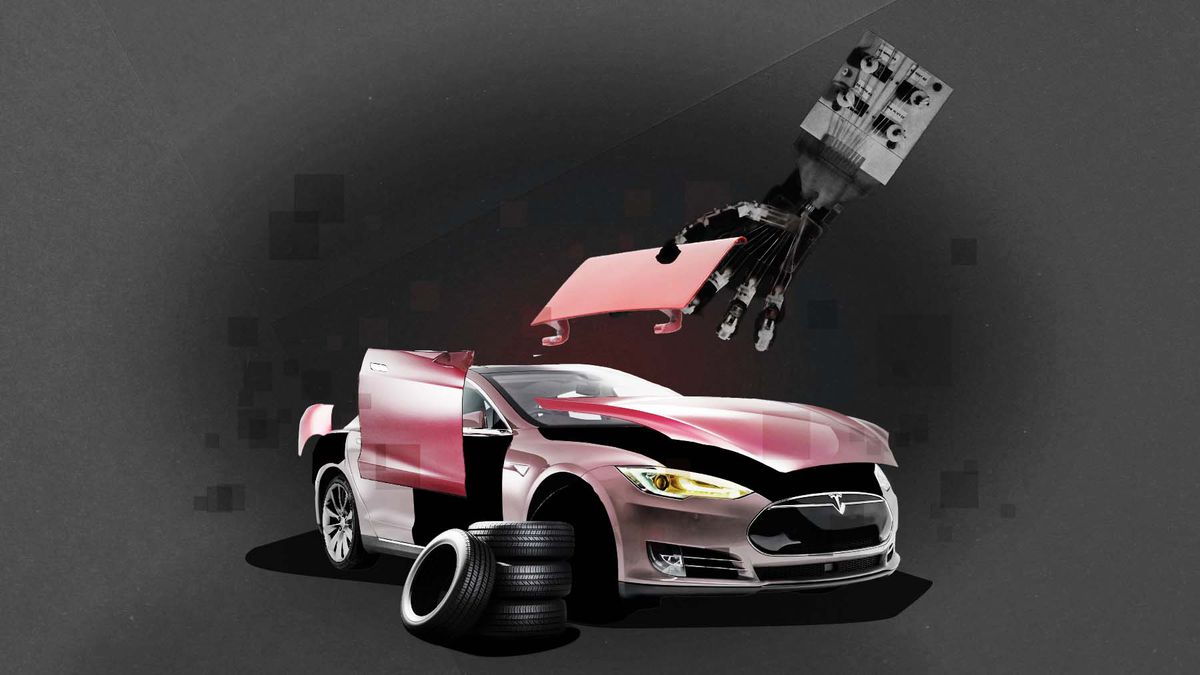Tesla and Insurers: Navigating the Challenges of Expensive Repairs
Introduction
The world of electric vehicles is rapidly evolving, and Tesla has emerged as a key player in this space. However, with innovation comes challenges, and one of the major issues faced by Tesla and its customers is the cost of repairs. In this article, we will explore how Tesla and insurers are taking different paths to address the issue of expensive repairs. From design and software changes to salvage auctions, both parties are finding unique solutions to mitigate the financial burden on Tesla owners.
The Expensive Repair Conundrum
When it comes to repairing Tesla vehicles, the costs can be astronomical. This poses a significant challenge for both Tesla owners and insurance companies. While Tesla is known for its cutting-edge technology and sleek design, these factors contribute to higher repair costs compared to traditional gasoline-powered vehicles. As a result, Tesla and insurers are exploring different strategies to tackle this problem.
Tesla’s Approach: Design and Software Changes
Elon Musk, the CEO of Tesla, acknowledges the issue of high repair costs and is actively working on solutions. Tesla is making design and software changes to its vehicles to lower repair costs and insurance premiums. Musk believes that small changes in the design of the bumper and providing spare parts needed for collision repair can have a significant impact on cost. By focusing on minimizing repair costs, Tesla aims to make owning and maintaining its vehicles more affordable for customers.
Insurers’ Response: Salvage Auctions and Insurance Premiums
Insurance companies, on the other hand, are taking a different approach to address the challenge of expensive repairs. When a low-mileage Tesla Model Y is involved in a crash, some insurance carriers are choosing to write off the vehicle as a total loss rather than repairing it. These vehicles are then sent to salvage auctions, where they are sold off to the highest bidder. Insurance companies deem many of these vehicles too expensive to repair, and salvaging them helps mitigate their financial losses.
Balancing Premiums and Repair Costs
During Tesla’s fourth-quarter earnings call, Musk highlighted that premiums from third-party insurance companies were unreasonably high in some cases. To counter this, Tesla’s insurance arm is putting pressure on insurers by offering lower rates to Tesla owners. By offering competitive insurance premiums, Tesla aims to provide its customers with more affordable coverage and encourage them to choose Tesla’s insurance services over third-party providers.
The Impact on Tesla’s Reputation and Demand
Despite the reputation for expensive repairs, Tesla’s demand remains strong. Musk stated that demand is running well ahead of the company’s ability to produce vehicles. This indicates that the high repair costs associated with Tesla vehicles have not significantly dampened customer interest. Tesla’s focus on improving repair costs and offering competitive insurance options may contribute to the continued demand for its electric vehicles.
Crashed Teslas at Auction: A Closer Look
A deeper analysis of crashed low-mileage Tesla Model Ys listed at salvage auctions reveals some interesting insights. Many of these vehicles had fewer than 10,000 miles on the odometer, indicating that they were relatively new. The retail prices of these cars ranged from $60,000 to over $80,000, highlighting the significant investment required to own a Tesla.
Insurance Companies and Salvage Auctions
Insurance companies, such as State Farm, Geico, Progressive, and Farmers, buy back crashed Tesla vehicles and list them at salvage auctions. The decision to salvage these vehicles is primarily driven by the high estimated repair costs. By reimbursing the owners and salvaging the vehicles, insurance companies can minimize their financial losses.
Tesla Insurance: A Game Changer
To provide more affordable insurance options for Tesla owners, the company launched its own insurance affiliate in August 2019. Tesla Insurance promises rates up to 30% lower than competitors. During the fourth-quarter earnings call, Tesla’s Chief Financial Officer, Zachary Kirkhorn, highlighted the rapid growth of Tesla Insurance. At the end of the year, it was generating premiums at an annual rate of $300 million, outpacing the growth of the company’s vehicle business.
The Role of Vehicle Design and Software
Tesla’s commitment to minimizing repair costs goes beyond insurance. The company believes that design and software changes can significantly impact repair expenses. Musk emphasized that even small design changes to bumpers and the availability of spare parts can have a substantial effect on repair costs. By continuously improving the design and software of its vehicles, Tesla aims to make repairs more efficient and cost-effective.
Conclusion
As Tesla continues to revolutionize the electric vehicle industry, the challenge of expensive repairs remains a critical issue. Tesla’s approach of making design and software changes to lower repair costs, coupled with its competitive insurance offerings, demonstrates the company’s commitment to addressing this challenge. On the other hand, insurance companies are salvaging crashed Tesla vehicles to mitigate their financial losses. By exploring different paths, both Tesla and insurers are working towards a common goal of providing affordable solutions for Tesla owners. As the industry evolves, it will be interesting to see how these strategies develop and their impact on the future of electric vehicle ownership.




